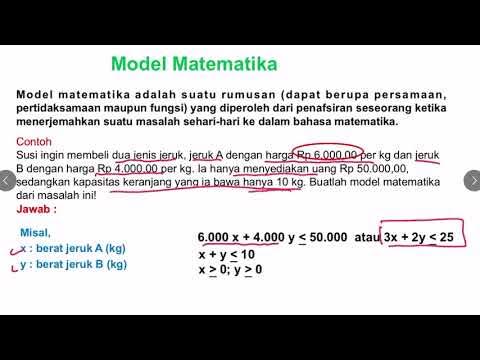An Example Proof using Identities of Regular Expressions
Summary
TLDRIn this lecture, the presenter guides viewers through the process of proving the equivalence of two regular expressions. Beginning with the left-hand side (LHS), the speaker demonstrates how to apply known identities to simplify the expression step by step, ultimately showing that the LHS matches the right-hand side (RHS). Key identities are employed to factor and manipulate terms, leading to a conclusive proof. This structured approach not only illustrates the application of theoretical concepts in formal language theory but also emphasizes the importance of systematic reasoning in mathematical proofs.
Takeaways
- 📘 The lecture focuses on proving the equivalence of two regular expressions.
- 🔍 The first regular expression (LHS) is presented for analysis.
- 📝 The importance of factoring out common terms in expressions is highlighted.
- 🔗 The expression '1 + 0*1' is identified as a repeating term in the LHS.
- ✏️ A key identity used in the proof is 'epsilon + R* R = R*'.
- 🔄 The process of simplification leads to recognizing the equivalence of terms.
- ✅ The final form of the LHS is compared directly with the RHS.
- ⚖️ The proof demonstrates how identities can simplify complex regular expressions.
- 📏 The result shows that both the LHS and RHS yield the same expression.
- 👩🏫 The importance of understanding regular expressions and their identities is emphasized for solving such problems.
Q & A
What is the main objective of the lecture?
-The main objective of the lecture is to prove the equivalence of two regular expressions.
What are the two regular expressions being compared?
-The two regular expressions are: LHS: 1 + 0^*1 + 1 + 0^*1 0 + 1 0^*1^*0 + 1 0^*11 and RHS: 0^*10 + 1 0^*1.
What does LHS stand for?
-LHS stands for 'Left-Hand Side', which refers to the expression being analyzed on the left side of the equation.
How does the speaker simplify the LHS expression?
-The speaker simplifies the LHS by factoring out the common term '1 + 0^*1' and then combining the remaining terms.
What regular expression identity is applied during the proof?
-The identity applied is ε + R^* R = R^*, which allows simplification of the expression.
What does the term 'ε' represent in the context of regular expressions?
-In the context of regular expressions, 'ε' represents the empty string.
What does the term '0^*' indicate?
-'0^*' indicates zero or more occurrences of the character '0'.
How does the final expression compare to the RHS?
-The final expression simplifies to the same form as the RHS, proving their equivalence.
What is the significance of recognizing common terms in the proof?
-Recognizing common terms simplifies the proof process, making it easier to manipulate and validate the regular expressions.
What is the overall takeaway from this lecture on regular expressions?
-The overall takeaway is the importance of understanding regular expression identities for simplifying and proving equivalences in expressions.
Outlines

このセクションは有料ユーザー限定です。 アクセスするには、アップグレードをお願いします。
今すぐアップグレードMindmap

このセクションは有料ユーザー限定です。 アクセスするには、アップグレードをお願いします。
今すぐアップグレードKeywords

このセクションは有料ユーザー限定です。 アクセスするには、アップグレードをお願いします。
今すぐアップグレードHighlights

このセクションは有料ユーザー限定です。 アクセスするには、アップグレードをお願いします。
今すぐアップグレードTranscripts

このセクションは有料ユーザー限定です。 アクセスするには、アップグレードをお願いします。
今すぐアップグレード関連動画をさらに表示

Lección 15: Teorema de Kleene (UACM - TC)

Solving Rational Equations | General Mathematics

Simplifying Expressions Involving Indices | O Level Additional Mathematics

MINIMIZATION OF DFA WITH EXAMPLE IN AUTOMATA THEORY || DFA MINIMIZATION || TOC

Arden’s Theorem

MENENTUKAN MODEL MATEMATIKA DARI SOAL CERITA SPtLDV
5.0 / 5 (0 votes)
